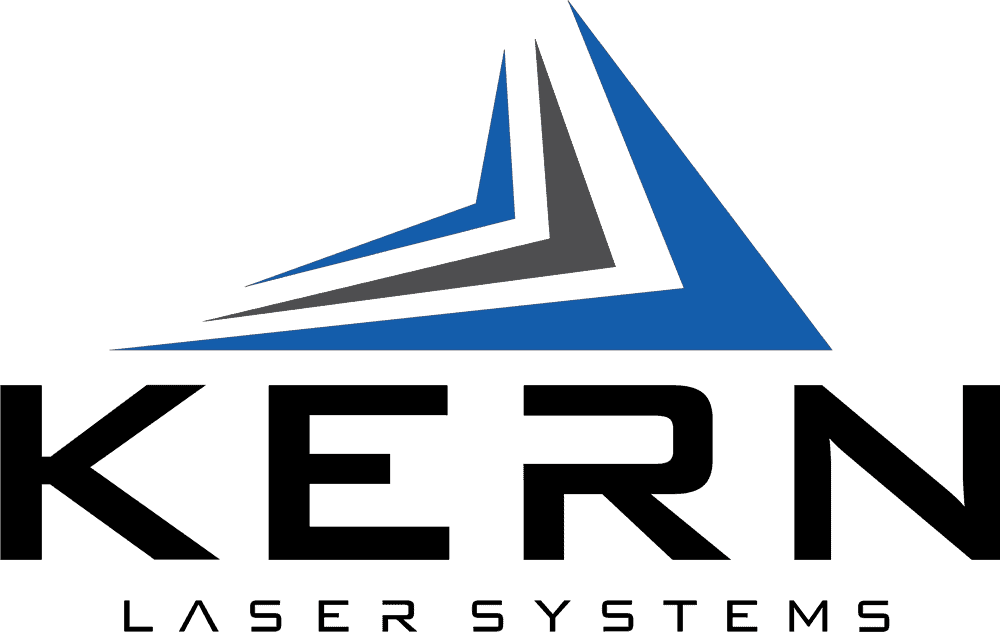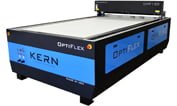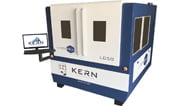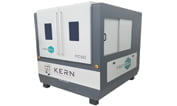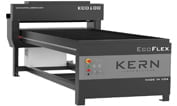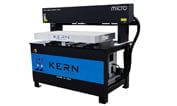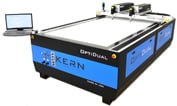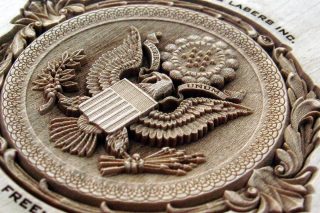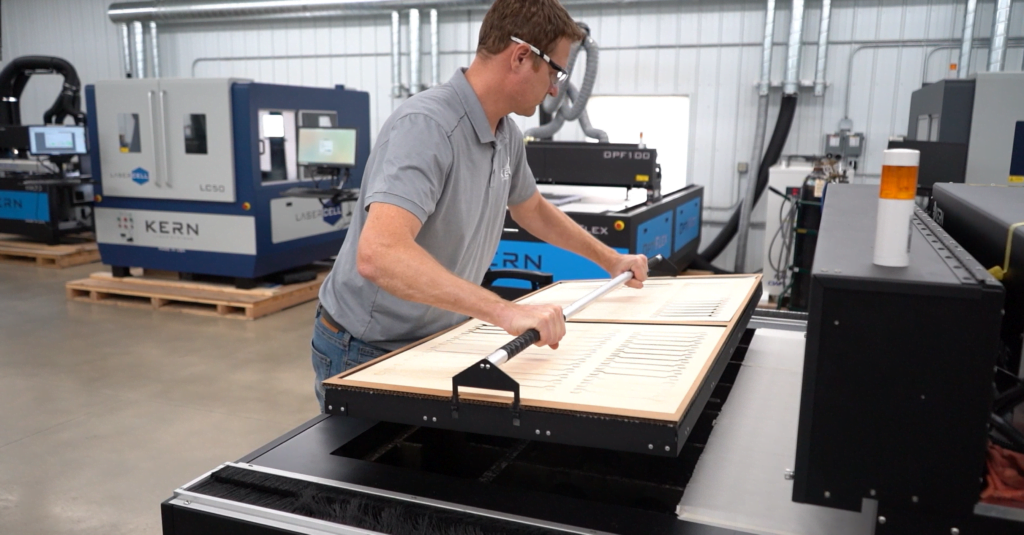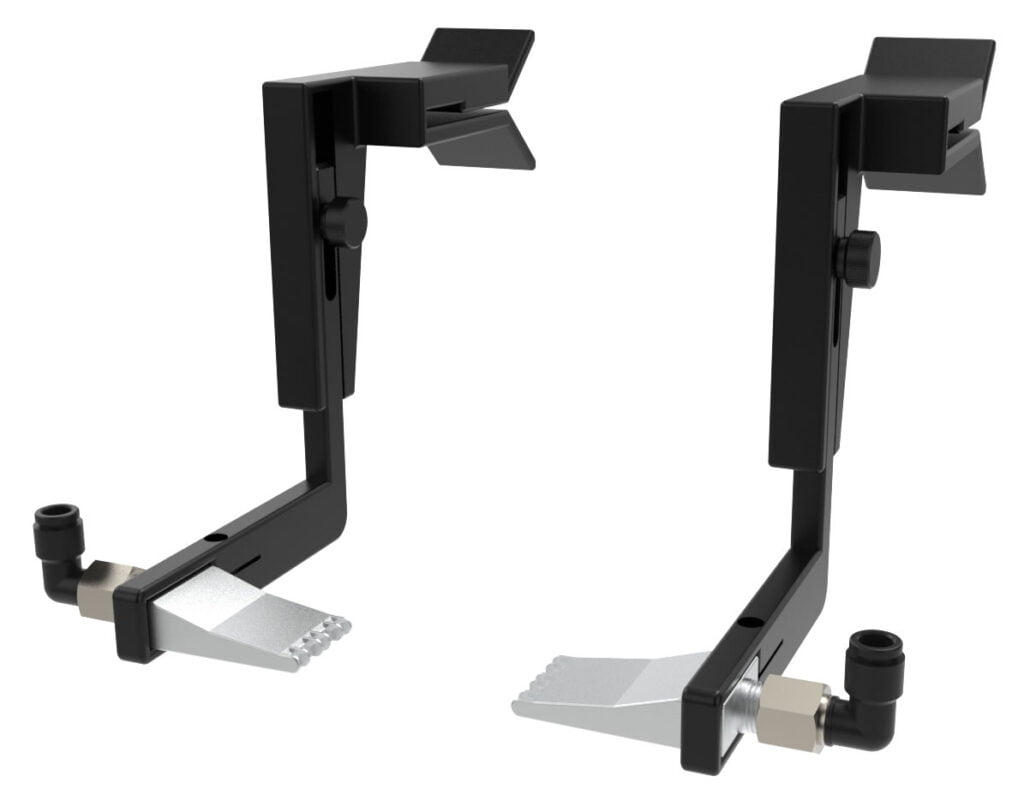A good laser cutting or engraving system is a versatile machine that will allow a knowledgeable operator to produce a high-quality product using a variety of materials. That being said, a single laser may not be the appropriate choice for every application. You don’t necessarily need a high-powered CO2 laser system if you’re only using it to cut sheets of foam for furniture padding.
Depending on the materials you use the most and the type of cutting or engraving work you do, we can offer a laser system and optional features tailored to your needs.
Below you will find a list breaking down some of the most popular materials for laser processing and some of the key considerations for working with them, as well as a final summary of some of the key features and innovations that make Kern Laser Systems a great choice no matter what material you’re working with.
Our website’s Applications page also offers a detailed guide to working with a wide variety of common materials.
1. Wood
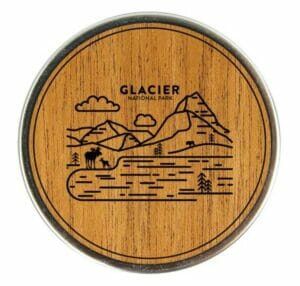 Our machines can process wood in many ways, from cutting sheets of wood down into pieces to be fitted together, to creating intricate engraved wood designs, including incredible 3D wood carvings. Our machines can cut from thin veneers up to 1” of hardwood. Some of the most common species of wood for laser cutting and engraving are oak, birch, maple, and basswood, but lasers can be used with hardwoods, softwoods, exotic woods, and engineered woods like cork or MDF as well.
Our machines can process wood in many ways, from cutting sheets of wood down into pieces to be fitted together, to creating intricate engraved wood designs, including incredible 3D wood carvings. Our machines can cut from thin veneers up to 1” of hardwood. Some of the most common species of wood for laser cutting and engraving are oak, birch, maple, and basswood, but lasers can be used with hardwoods, softwoods, exotic woods, and engineered woods like cork or MDF as well.
Laser cutting offers a speed advantage over a CNC machine for cutting large panels. The small kerf (the portion of material burned away by the laser beam during cutting) of our laser systems also minimizes material waste. This is also good for marquetry applications.
For intricate and artistic woodwork, our KCAM software allows the operator to design in true 8-bit grayscale, using 256 shades of gray. A skilled user can apply this capability to create beautiful 3D woodwork. This makes wood an incredibly versatile material for our laser systems.
2. Steel
Steel can be divided into four different types – carbon steel, stainless steel, alloy steel, and tool steel. Kern laser systems can be used to cut and engrave all types, but each one requires different specifications for the best final product.Kern’s CO2 lasers, which run from 100 watts to 650 watts, can cut through mild steel up to a quarter-inch thick. Our fiber lasers can cut through up to .375-inch thickness.
Steel is a versatile material. It can be used to make signage, dashboards, and other control surfaces, automotive and other machine parts, pipe joints, commercial signage, labels and barcodes, and more.
For thin-gauge metalwork, our lower-wattage CO2 lasers are appropriate and can be a cost-effective way to bring metal processing in-house for many businesses.
3. Acrylic
Acrylic is an excellent choice for laser cutting and engraving because it can be processed quickly with high-quality results. A popular cutting technique used for acrylic is producing a flame-polished edge quality. This is achieved with slow speed and high power. The laser beam melts the edges of the acrylic producing a flame-polished edge right off the table. When engraving, beautiful white frosty etchings can be achieved.
Laser-cut acrylic can be put to many uses. It can be used to create trophies, displays, signage, LED edge-lit panels, personal protective equipment, and more.
4. Foam
Foam is a flexible material. It can be used in furniture, footwear, and other types of padding, in boat decking, and other similar applications. It can be precision-cut with relative ease into a variety of shapes, and its porosity means it can also be used in filtering applications.
Depending on foam density, lasers from 50 watts to 650 watts can be used to cut it. In many cases, the high beam quality of a lower wattage will achieve a better result than a high wattage, since foam is a soft material.
Our lasers can be used to “shadow” cut foam molds for tool storage. We even use this technique to create the foam lining for the tool kits that come with each of our laser systems.
5. Stone
Our laser-cutting machines can be used to create etchings on the surface of pieces of stone as well as on slate slabs. Granite, marble, and limestone are popular stones for laser etching. The laser turns the stone white in the process of engraving.
For granite, marble, and many types of slate, the laser turns the etched stone surface white, which creates a nice contrast to the natural color of the stone. Stone and slate are popular choices for flooring, countertops, monuments, and other forms of interior decoration, and laser engraving of both materials opens up a wide variety of aesthetic opportunities.
The Versatility of Kern Laser Systems
 No matter what materials you’re working with, there is most likely a Kern laser system that can suit your needs. Our standard and optional features are thoughtfully designed to make cutting and engraving many different types of material as easy and intuitive as possible.
No matter what materials you’re working with, there is most likely a Kern laser system that can suit your needs. Our standard and optional features are thoughtfully designed to make cutting and engraving many different types of material as easy and intuitive as possible.
The Automatic Focusing Height Follower, a feature we developed used for cutting metal, allows the laser operator to ensure optimal beam focus even when the height of the laser cutting head over the workpiece varies.
For materials like wood and foam which can produce fumes when cut with a laser, our laser systems come equipped with vacuum exhaust systems to evacuate fumes out of the workspace. Our downdraft vacuum table serves the dual purpose of exhausting fumes and holding work material to the surface of the table. When the work is finished, the vacuum can be released to remove the work pieces.
Our EcoFlex system can also be equipped with the Z12 monument package for heavy stones up to 12 inches thick to be placed on the table to create heavy stone monuments like headstones. A roller table allows a single operator to load and unload heavy stonework pieces.
